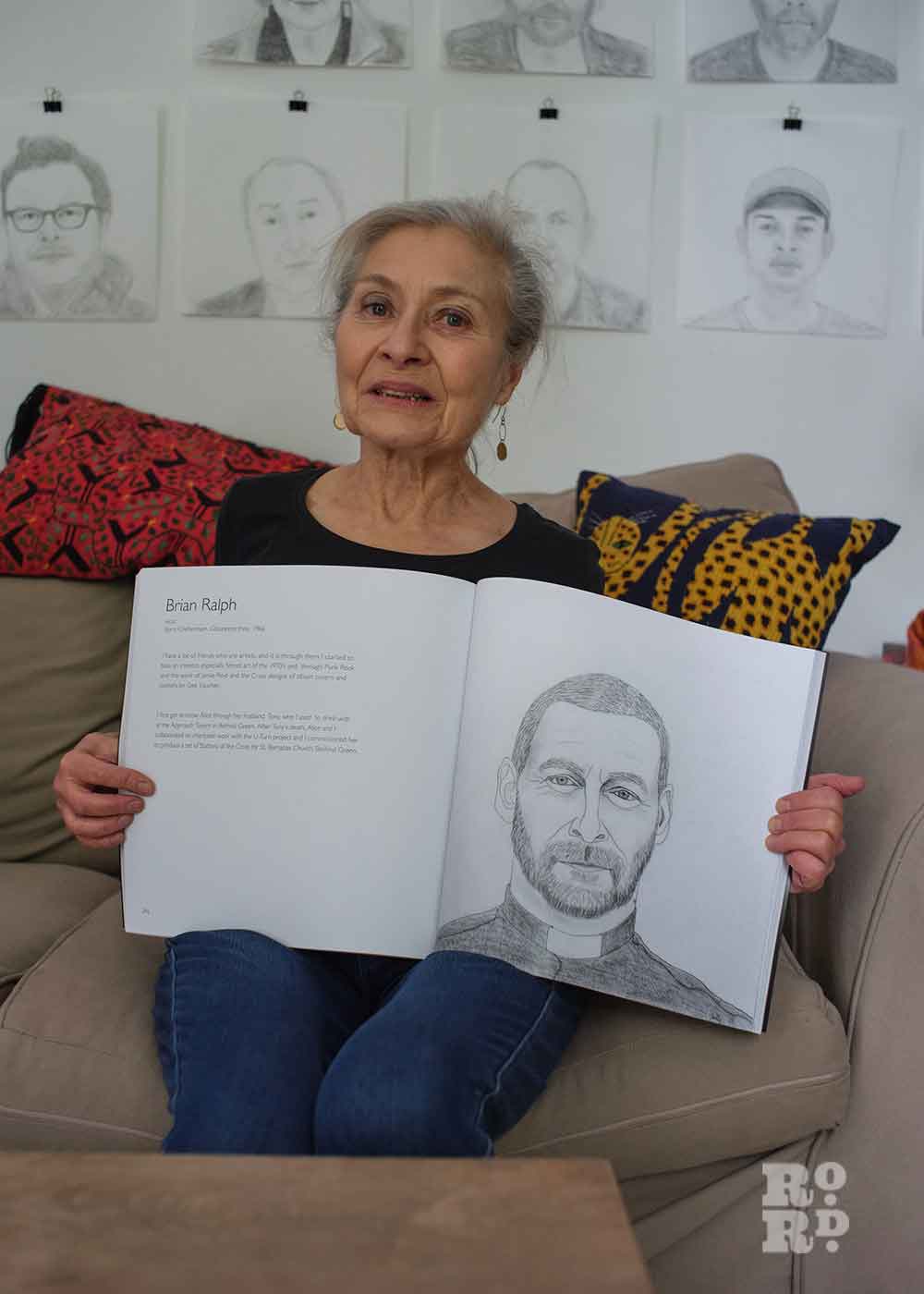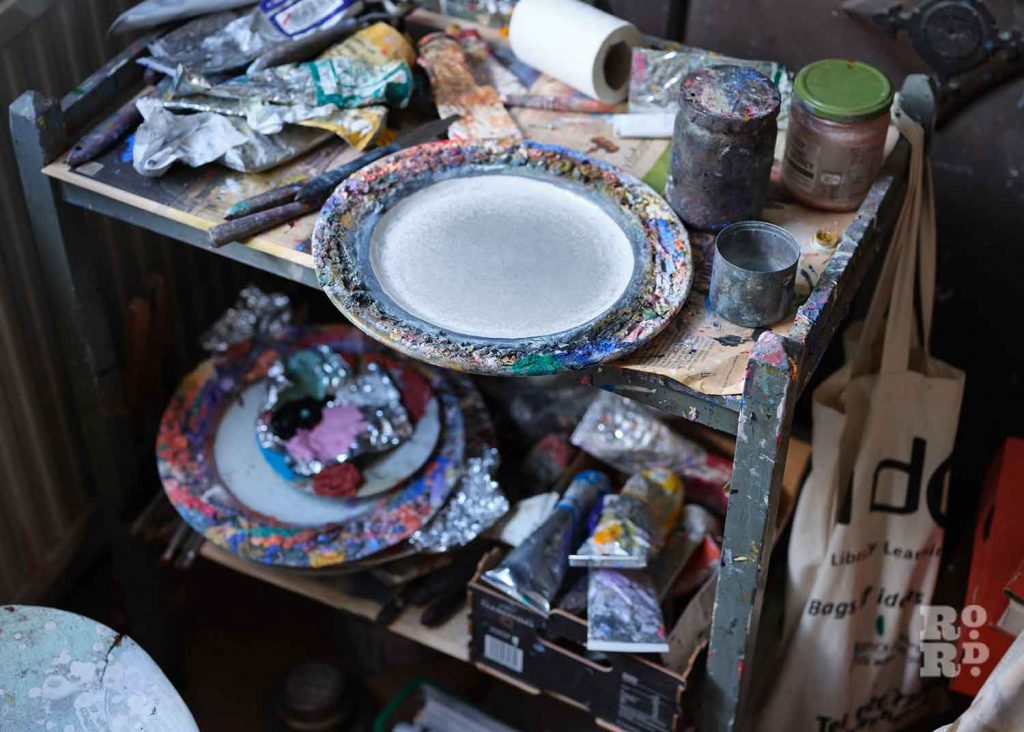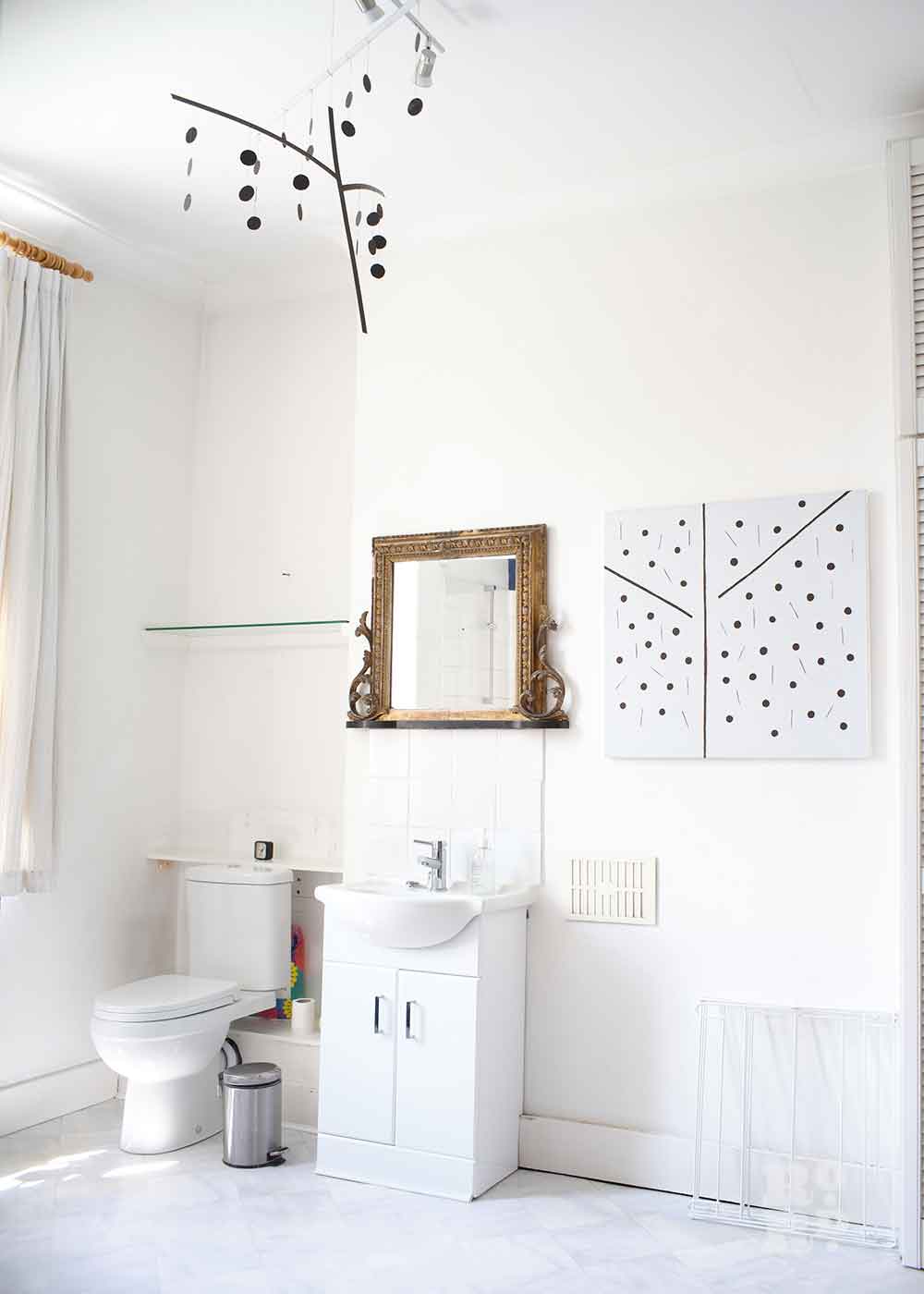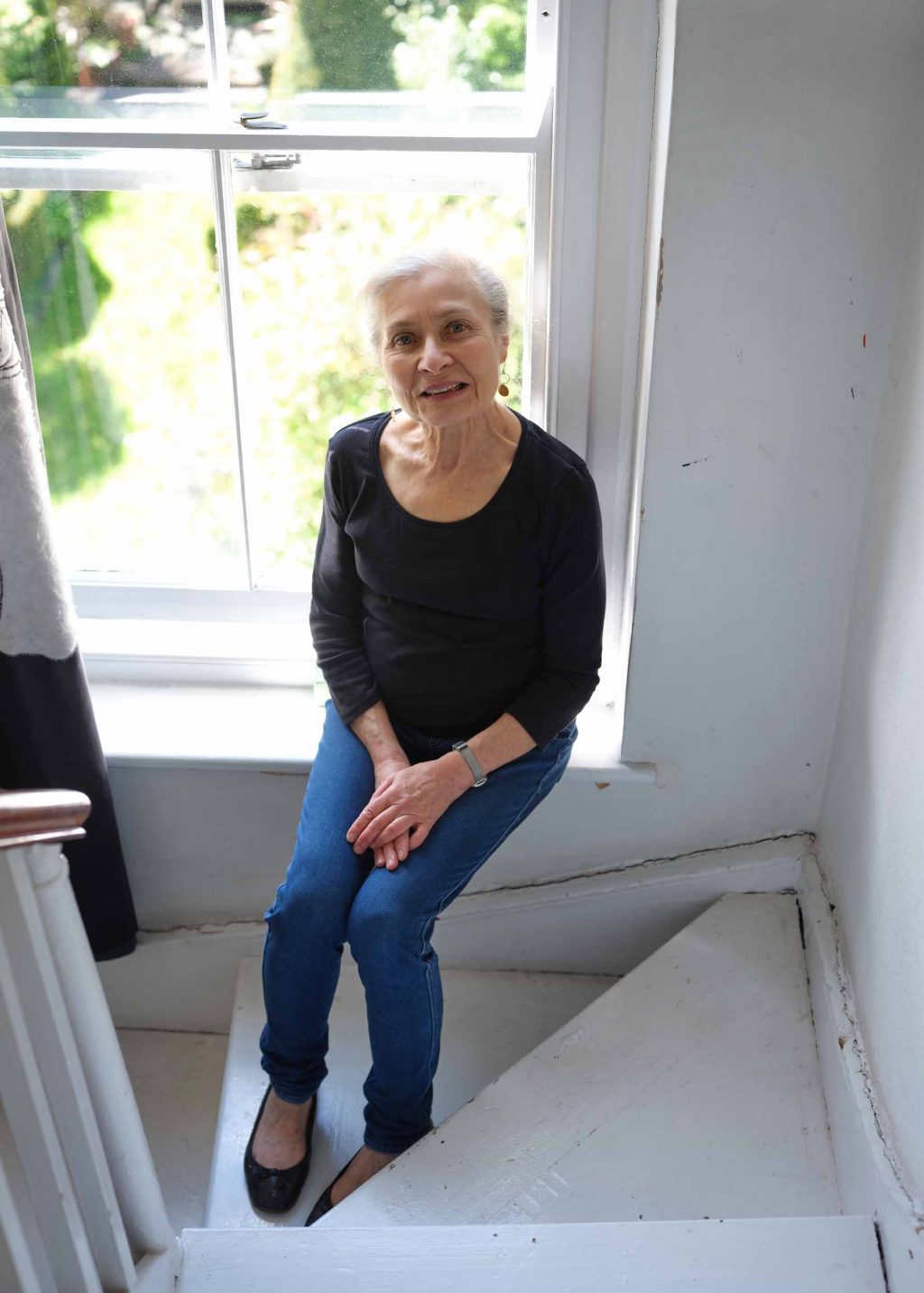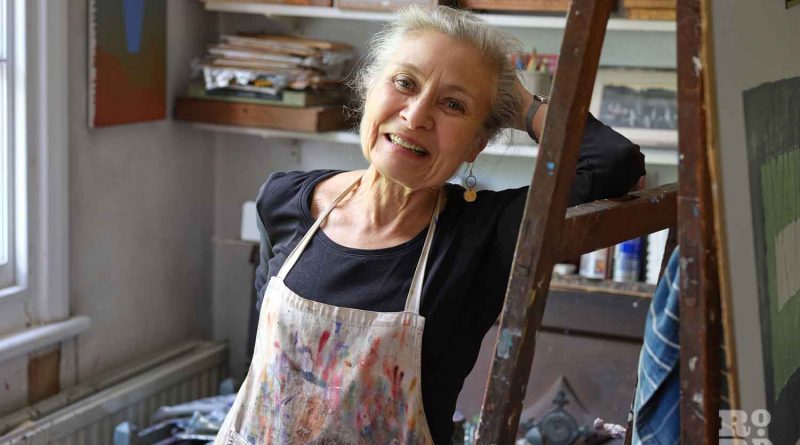A sketch of Alice Sielle and the community she has drawn together
One of Tredegar Square’s longest residents, Alice Sielle’s new book of portraits documents the familiar faces of local people who supported her.
‘I always thought you had to be very grown up to do portraits,’ explains Alice Sielle, who finally found herself mature enough at the age of 68 (she is now 71) to take the leap from abstract to portraiture.
‘It was a terrible challenge, I was terrified of it’ she says. Her tiny frame is dwarfed by the drawings of faces that adorn her living room walls, some smiling, some serene and some sternly looking down at her from on high.
Up there is Brian Ralph, the punk Vicar of The Parish Church of Saint Barnabas, who ‘did a good line in atheist funerals,’ including that of Sielle’s late husband, Tony.
Towards the middle of the wall, you can see Julie Begum, ‘a great local character’ who co-runs The Swadhinata Trust, a secular community group that promotes Bengali history and culture. And just over Sielle’s left shoulder is architect Maxwell Hutchinson, who designed the fire escape that dominates the exterior of the Chisenhale Dance Space.
These are only around half of the 153 portraits that make up one of Sielle’s most recent projects that documents the faces of those who have purchased her work. It started three years ago and finished in June 2020, it her ‘way of saying thank you for liking it enough to want to own it.’
As a bonus thank you, every subject receives an oil painting from the archives, which, it seems, is part of a wider strategy to diminish Sielle’s mountain of paintings so that she doesn’t leave her son and daughter-in-law ‘the burden of 450 unsold paintings.’
‘I’ve painted myself out of my workroom,’ she says with a laugh. While the portraits that hang on the walls downstairs are hung in neat lines, her workroom feels like an artist’s workshop conjured in the imagination of any child, with crusted paint trays and canvases piled to the ceiling which she slips around.
Culminating in a book of the images titled What’s the price of a poem?, the portraits make up a map of Sielle’s life, people she has met, connected with, and many of whom make up the network of a community in which she has been ingrained for 37 years.
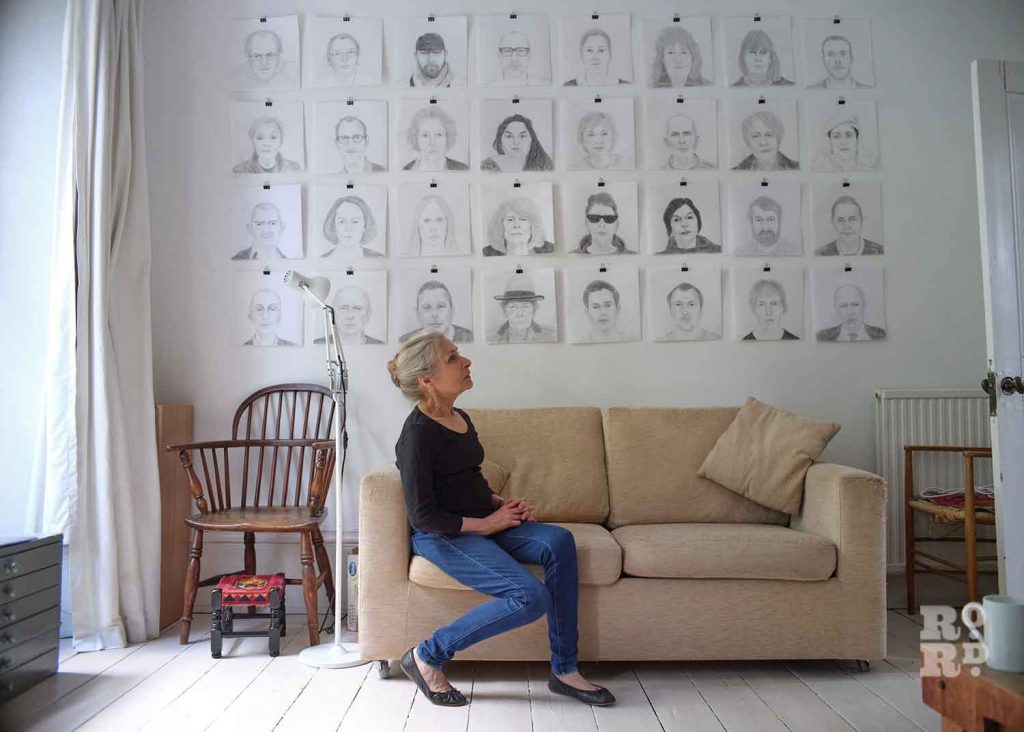
Sielle moved to Tredegar Square in 1984, when this elegant Georgian quad was but a ‘square of tarmac with a broken chain fence.’ The house itself was covered in corrugated iron, unoccupied and ‘absolutely shambolic.’ The previous tenants had downed tools and fled, leaving an unfinished concrete basement downstairs and one old electric cooker upstairs.
Pregnant with her first and only child, with her late husband Tony, the couple purchased the house without even being able to see out into the garden, which was the main draw of the property for them. They brought their newborn son George home from Mile End Hospital just months later.
This was a return to London for Sielle, who grew up in the West of the city, but looked East when it came to the time to buy and settle down with a family.
After completing schooling in London, Sielle attended the Bath Academy of Art at Corsham, where on Saturday mornings the pupils would go to the Medieval barn to do life drawings. As a London child, this was a ‘fairytale.’
But this was ‘the year of love,’ 1968, and student protests spread across Europe.n the UK students staged sit-ins and protests against teaching methods and global conflicts.
‘The college was taken over,’ Sielle recalls. ‘The teaching staff all left, the students took over the whole shebang, and we were infiltrated by German left-wing activists! All of the hostels were no longer separate for boys and girls – it was all scandalous!’
In the furrore, Sielle dropped out of the course which did ‘sort of upset the apple cart,’ in regards to her career as an artist. Luckily, after a brief hiatus, Sielle continued to paint and started creating art full time in 1973, which she has been doing ever since.
Compared to when she first moved in, Sielle describes her home as ‘unrecognisable’. As we meander through her home, she draws curtains that she has sewn, points to a mobile of a plane tree she has created twirling in her bathroom, and of course her recognisable abstract oil paintings hang on most of the available wall space.
While Sielle doesn’t view herself explicitly as a political artist, issues that are close to her heart run through her work. Her One Creation series highlights the interconnectedness of all living things, as well as our interdependence on each other and the planet. Sielle describes climate change as ‘the most pressing thing we have to fight,’ but with the silver lining that, at least, it might bring people together in battle.
Around ten years ago Sielle, acting on her own philosophy of ‘if you don’t like something, don’t moan, do something about it,’ decided to do what she could to fight what she saw as rising extremism. She felt that the community was fracturing around her, and the root cause was ignorance of each other’s way of life.
Invoking the power that comes with being a ‘totally non-threatening, small old woman,’ Sielle went door-knocking to organise ‘Belief in Bow,’ a series of music and walking events that would bring different sectors of the community together.
Sielle and co hosted three world music concerts at the Parish Church of St Barnabas, spotlighting Jewish and Bengali music, highlighting the changing face of the East End through immigration.
Through the network that she created during this time, Sielle continues to take groups of people who come from different cultural backgrounds and may otherwise not meet each other, on trips to art galleries.
‘Milking’ her power as an ‘old lady artist’, she acquires the tickets for free for those in her group who aren’t able to afford them. Adding clarity to the arrangement she explains, ‘it’s not a charity or nothing like that, it’s just me!’
While Sielle’s most famous artwork is abstract, it would seem that the time has come to focus – in detail – on the beloved subjects who have enabled her to live the life of an artist. She has drawn a network of people around her, old and new, many of whom make up the fabric of Bow.
If you enjoyed this, take a look at our portrait of Jon George, Chisenhale Arts’ founding member, with photography by Tom Hains.
